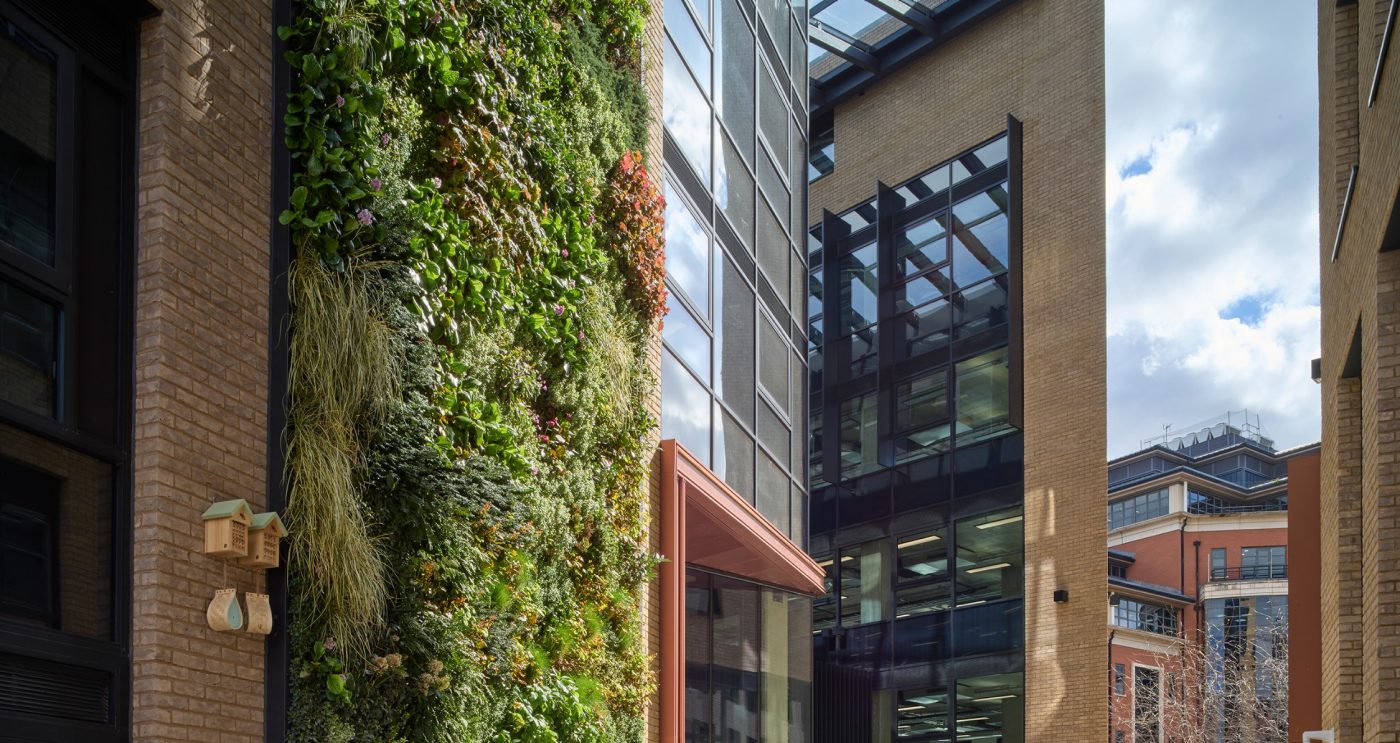Published 20/05/25



World Bee Day: Designing pollinator-friendly urban landscapes
Published 20/05/25
On World Bee Day, we’re reminded not just of the ecological importance of bees—but of the vital role we play in designing environments that support them. As biodiversity loss accelerates, the built environment becomes a critical arena for change. Drawing on guidance from The Wildlife Trust, we’ve explored how key principles of pollinator support can be applied to urban design—offering architects, planners, and developers practical ways to create more biodiverse spaces.
Why pollinators need urban help
Urban areas, often dismissed in ecological conversations, actually offer significant opportunities. As traditional habitats decline, cities and developments can serve as essential refuges for species like bees, butterflies, hoverflies, and moths.
Challenges pollinators face in urban environments include:
The design opportunity: Creating pollinator havens
Drawing on insights shared by The Wildlife Trust, we explore design ideas that can transform urban spaces into pollinator-supporting ecosystems.
1. Plant for Diversity and Seasonality
Select layered, native plant mixes that bloom across the seasons. Pollinators rely on variety—monocultures simply won’t do. As The Wildlife Trust notes, “The best environments for pollinators resemble natural habitats meaning less intervention the better.”
2. Connect Green Spaces
Create continuous green infrastructure—hedgerows, flowering corridors, and planted verges that let pollinators move safely and freely across developments.
3. Rethink Lawns and Roofs
Lawns have their place, but wildflower meadows and green roofs with pollinator-attracting species are far richer in biodiversity and visual interest.
4. Make Space for Microhabitats
Even small features count. From deadwood stacks to bee hotels, these elements create nesting and hibernation spots. Integrations like bee bricks—nesting sites built directly into masonry—demonstrate how biodiversity can be embedded right into the structure of a home.
5. Add Water Thoughtfully
Small ponds or birdbaths with gentle edges offer critical water sources. For compact spaces, container ponds provide a simple but effective solution.
Expert insight from the field
Urban spaces of any size can support pollinators when designed with intention. As The Wildlife Trust highlights:
“Every garden has the potential to become a haven for wildlife. By choosing the right plants and embracing a bit of messiness, we can transform outdoor spaces into thriving biodiversity gardens. Collectively, our gardens can form a significant living landscape. However, these landscapes are often fragmented and disconnected, making it harder for wildlife to thrive. We need to find ways to link our gardens to surrounding areas and create a more connected environment.”
This principle applies equally to large-scale developments and dense city blocks. Urban environments can help bridge fragmented habitats through green corridors, pollinator-friendly rooftops, and layered planting schemes.
The guidance also emphasised the unique role urban gardens and shared spaces can play:
“Whether you have a large garden, a small balcony, or even just a hanging basket, your outdoor space can act as a crucial stopover for pollinators navigating through urban areas.”
This offers an important suggestion for developers and architects that the potential of a space depends more on its design than its scale. When applied thoughtfully, even small pockets of greenery can act as stepping stones in a wider ecological network.
Why it matters
Incorporating pollinator-friendly features isn’t just an ecological imperative—it delivers tangible benefits to developments:
wienerberger help support The Wildlife Trust in every location we have a site, office or quarry, which means we actively engage with nine different trusts across the UK either through corporate sponsorships or dedicated project donations. This allows us to support the amazing conservation work the trusts do throughout the UK, but also provides our staff with benefits such as discounts in their stores and free parking at trust properties. It enables us to use The Wildlife Trusts’ expert knowledge to educate our colleagues through lunchtime webinars and volunteering days, or by providing specialist advice so we can improve the way we manage our spaces for biodiversity.
Final thoughts: Design for nature, design for the future
This World Bee Day, let’s move from awareness to action. Whether you’re shaping a new neighbourhood or greening a rooftop, pollinator-positive design is a win for nature, people, and place.